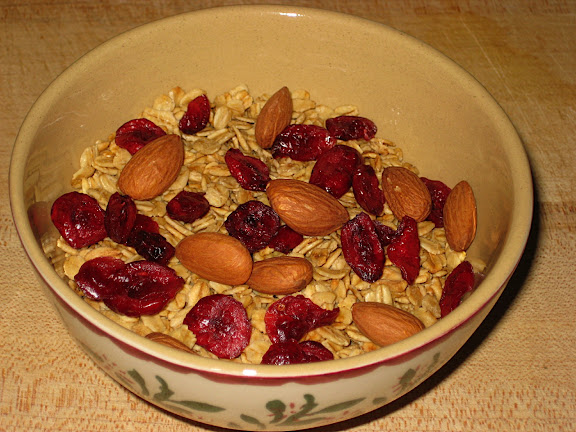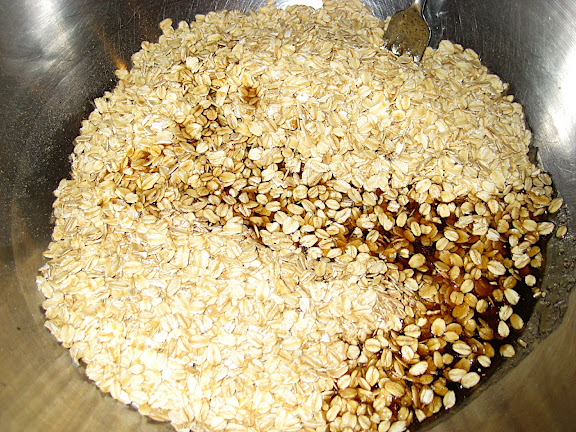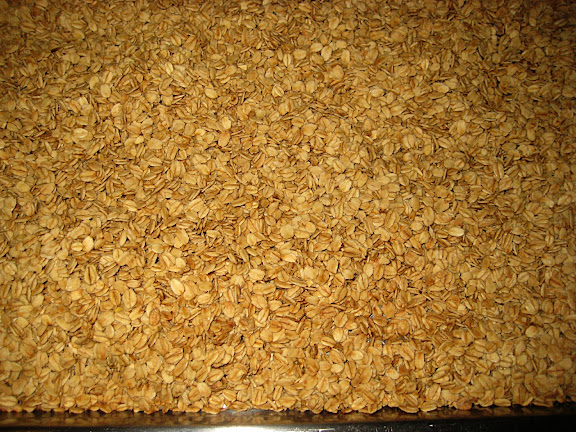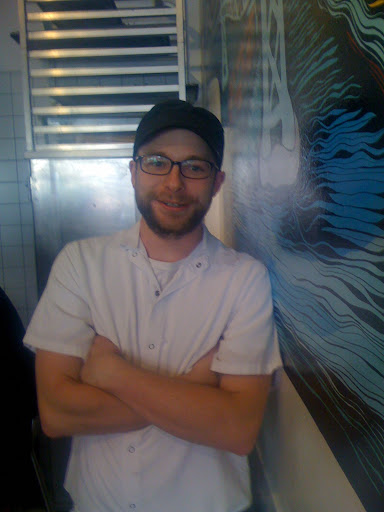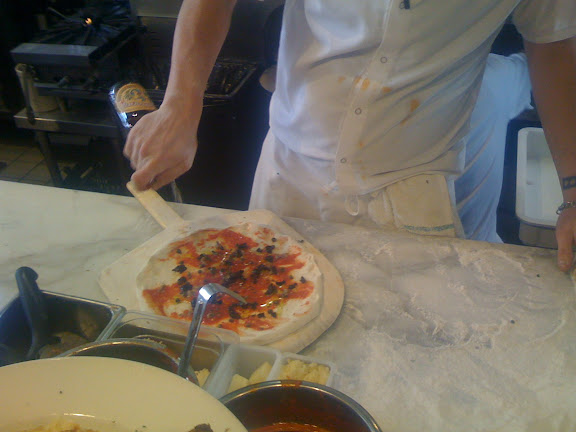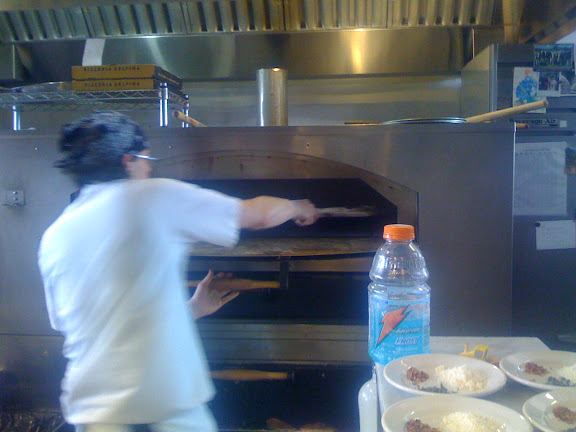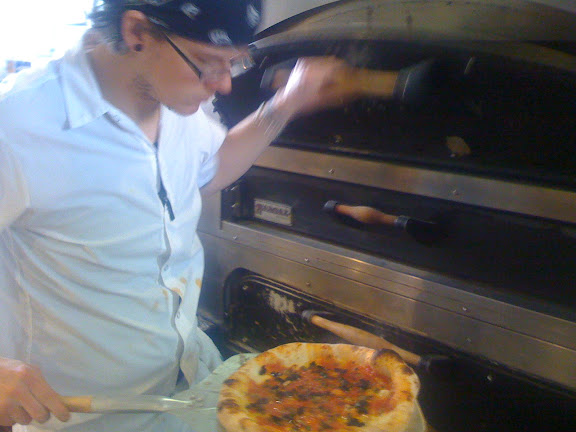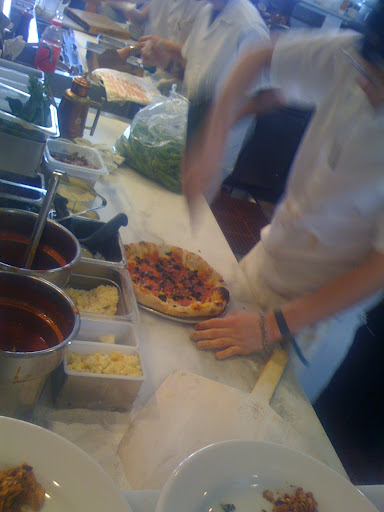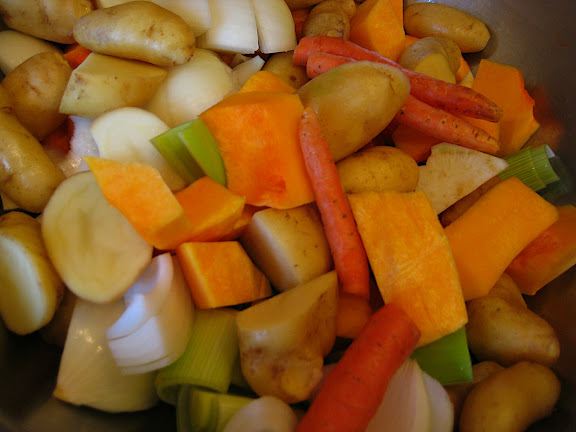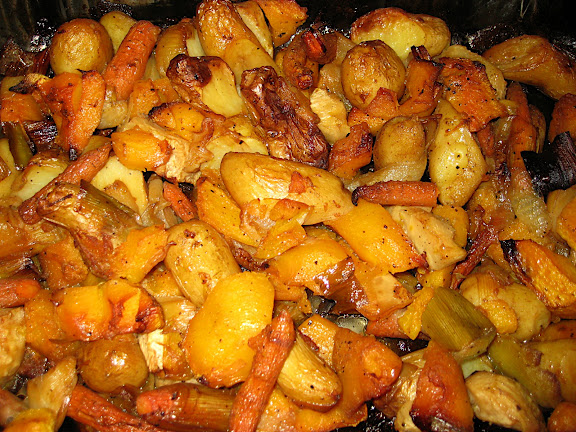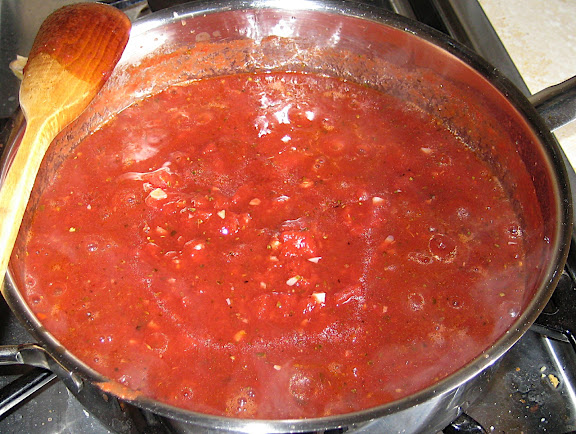I baked pizza in a wood fired brick oven last weekend thanks to my kind and adventurous friend Ross. It turns out that in his veritable jungle of a backyard in Los Altos stands a nicely appointed oven.
This was my first time closely examining one of these, and I was impressed. It had a built-in digital thermometer system for monitoring the oven temperature at six different spots in the oven. It also had a nice built-in gutter for sweeping ash easily (which we of course didn't notice until after we had cleaned out the ashes from the previous use).


Ross had never used the oven, but has heard that the previous residents of his house would fire it up regularly and then host the neighborhood for much baking and feasting.
Once we had it cleaned out, we set about lighting a fresh blaze. Naturally, neither of us had any matches or a lighter. After a failed attempt to ignite some paper using the electric stove in the kitchen--which resulted in much smoke in the kitchen but no flames suitable for carrying to the backyard at high speed--I made a quick run to a convenience store for a lighter.
The oven was stocked with several bags of hardwood charcoal, but we thought we would try first with the kindling that accompanied the box of small almond wood logs--four of them in all--I had purchased on my way over (those readers that know anything about firing up one of these ovens will also know at this point how misguided I was in this first attempt at using a wood fired oven ).
After a few attempts, we finally got the blaze going. Just to be on the safe side, we also filled a chimney starter with charcoal and lit it, with plans to add those coals to the fine almond wood blaze at some point.
Well, it turns out the almond wood I paid top dollar for was not seasoned, and it really wasn't going to burn without significant additions of more catalyst. That's when we became more serious about the charcoal option.
What began with a few handfuls of coals turned into an entire bag of charcoal going in the growing inferno. At this point, we were thinking we had some blaze going, and the oven would surely be hot enough to bake pizza in an hour or so. We had started early in the morning, and it was time to break out the espresso!
Initially we thought the thermometer system was broken. It seemed stuck at 52F. Oh well! It seemed plenty hot peering in through the door of the oven. After about 30 minutes, though, it seemed victory was most certainly at hand--the temperature at one of the sampling points was now over 100F! Great!
Well, sort of. The temperature grew slowly to around 200F, and then slowed further. It seemed we needed to add more fuel to the fire. Bag number two of hardwood charcoal went into the blaze (we're talking 25 pound bags of charcoal!), along with the rest of the unseasoned almond.
The temperature finally topped about 350F after another hour, and we were burning through fuel at a rate that had me feeling embarrassed for our outlandish addition of CO2 to the greenhouse gases of the rest of the US. We were also causing quite a bit of low-level wood smoke in the neighborhood, so much that at one point we thought the sirens in the distance were actually several fire departments coming to drench our oven--and this dream of wood fired pizza--with water from fire hoses. Luckily, the sirens wailed past the neighborhood and on to more important fires.

While I had read that it can take many hours to heat one of these ovens to serious Neopolitan style pizza making temperatures of 800F-900F, I guess I didn't really believe what I had read. Well, dear reader, take it from me: it takes many hours and a lot of fuel to get one of these ovens really hot!
As luck would have it, the oven was hot enough--at least in the spot covered by our mass of burning coals--to cook pizza. This was good, as we were getting hungry, and I was growing impatient--wood fired pizza already!
So we went ahead and prepped the first test pizza--a simple one with sauce, cheese, and oregano. We pushed the coals aside and in it went, at last!




And this is when I knew that the oven was no where near hot enough. The first pizza took nearly 8 minutes to cook, resulting in a delicious but slightly bready first round.
That's the end of part one of this story. Part two, which I may detail someday, includes 50 more pounds of charcoal and 10 more balls of pizza dough!
